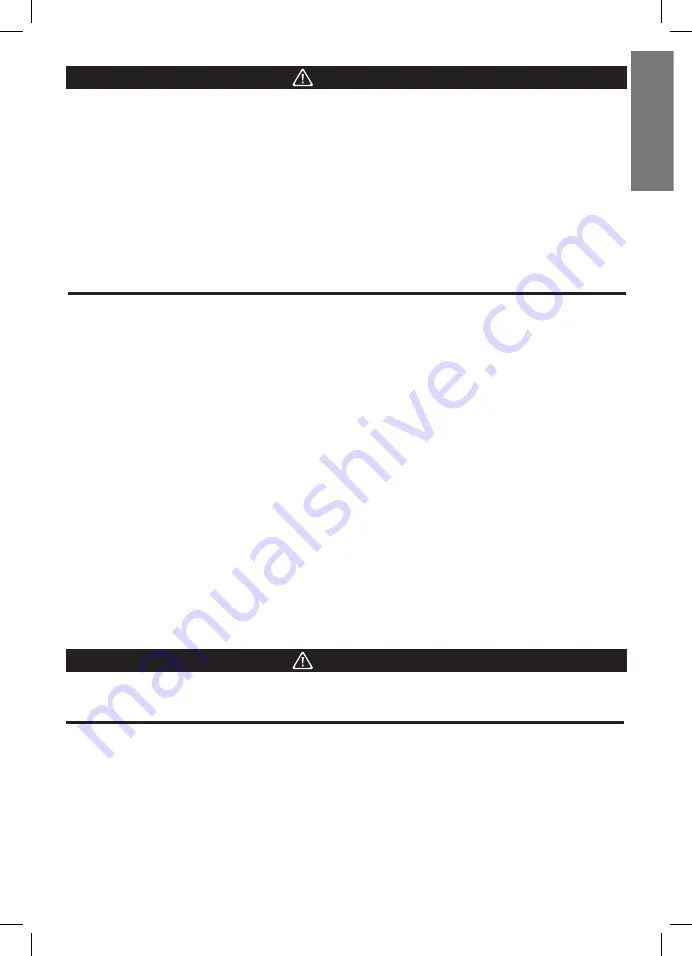
ENGLISH
WARNING
LEAVE CONTAMINATED AREA IMMEDIATELY IF:
• An emergency occurs and you cannot assist without putting yourself in harm’s way.
• Breathing becomes difficult or throat becomes irritated.
• Dizziness or other distress becomes apparent.
• Any component of the respirator becomes damaged.
• Battery is low.
• If you can smell or taste contaminants.
• Airflow to the mask decreases or stops.
Failure to comply with all of (but not limited to) these points can result in respiratory injury or death for the
user and may have serious consequences for people or items around you should an emergency situation
occur.
2. Components
The Tiki Respirator is a powered air purifying respirator (PAPR) that uses filters to remove harmful airborne contaminants.
It is made up of several components. The basic components required for the unit to function are the mask, blower, filter and
harness. The external battery pack extends the battery life of the mask and the charger is required to charge both the blower
unit and the external battery.
3. Initial Use and Charging
Step 1.
Remove all of the parts from the packaging. Ensure that all parts are included and that they are not damaged.
Please refer to Chapter 2. “Components”.
Step 2.
Charge the blower unit with the included battery charger. Then charge the external battery pack (sold separately).
It is important that both are charged fully before the unit is used to prevent the batteries from running out prematurely.
Charge the blower and external battery separately.
Charge status light (Fig 2, page 2) RED light = charging GREEN light = fully charged
Detailed view: Connect the plugs by lining up the three pins. Then push the plug in and turn the end of the plug clockwise to
secure it in place. (Fig 3, page 2)
)
WARNING
Please note that if the external battery is left connected to the blower when it is not in use the unit will discharge itself due to
the internal charging circuit in the blower. If the battery and the blower are disconnected the unit will remain charged. Never
charge the unit in less than 0°C.
Step 3.
Remove the harness from it’s packaging and attach it to the mask. Please see Fig 1 on page 2 for illustration.
Step 4.
Perform a “Seal check and fit test” as instructed in Chapter 4 in this instruction manual.
Summary of Contents for Tiki
Page 2: ...2...
Page 3: ...30 30 3...

























